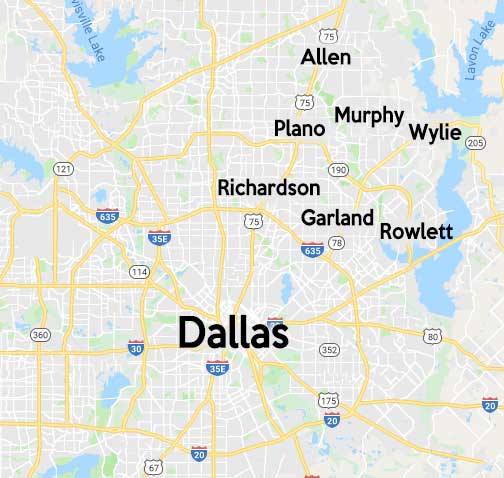Most Pool Service Starting At
$185.00 + tax
An Overview of the Pool Demolition and Filling Process
You have decided that you no longer want your pool, so now you would like to have it demolished and filled in. However, you are not exactly familiar about the process. In this article, we will share with you an overview of what you can expect your pool demolition team will do to accomplish the task.
People usually think you just dump dirt in a pool and nothing else. But they need to remember that it’s an in-ground construction, and if it’s not done correctly, the ground can cave in or the shell can float in the future.
Proper pool demolition can be done in two basic ways. One is by partially deconstructing the pool and covering it with rubble and dirt, and the other is by totally removing the pool structure before covering the pool cavity with dirt.
Partial pool demolition
Partial pool demolition is often a practical option for pool owners who want a cost-effective, less time-consuming process to get rid of their pool. Usually completed between a week or two, partial pool removal involves the following processes:
- Power off - Power will be disconnected at the breaker box.
- Draining - The pool will be drained of water
- Hole drilling - Multiple holes (at least 20) will be drilled at the bottom of your pool to prevent water from collecting underneath and turning the filled-in pool area into a mud pit when it rains.
- Deconstruction of the side walls – The walls are not completely removed. Rather, around two feet of the side wall’s top portions are demolished, allowing the pool to lie below the filled-in surface.
- Backfilling and compaction – The pool area will be backfilled with the demolished tile and coping. These will be compacted to prevent the filled-in area from sinking in the future.
- Clean dirt filling - The top will be filled with soil and re-sod, completely hiding the demolished pool.
Below, you can check out images from a recent pool demolition projcet we finished. The pool also had a waterfall.
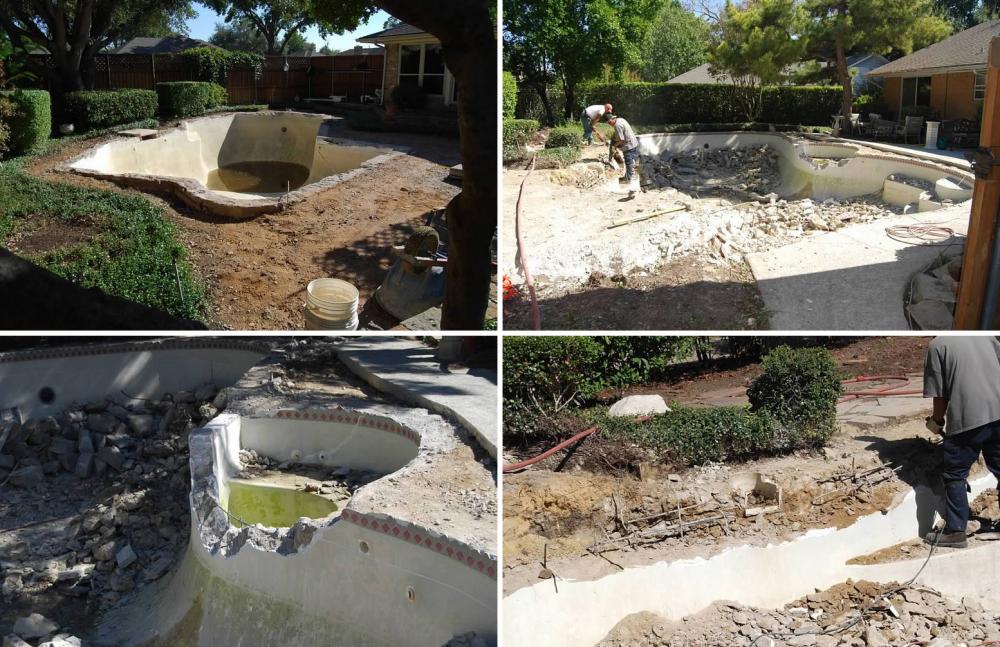
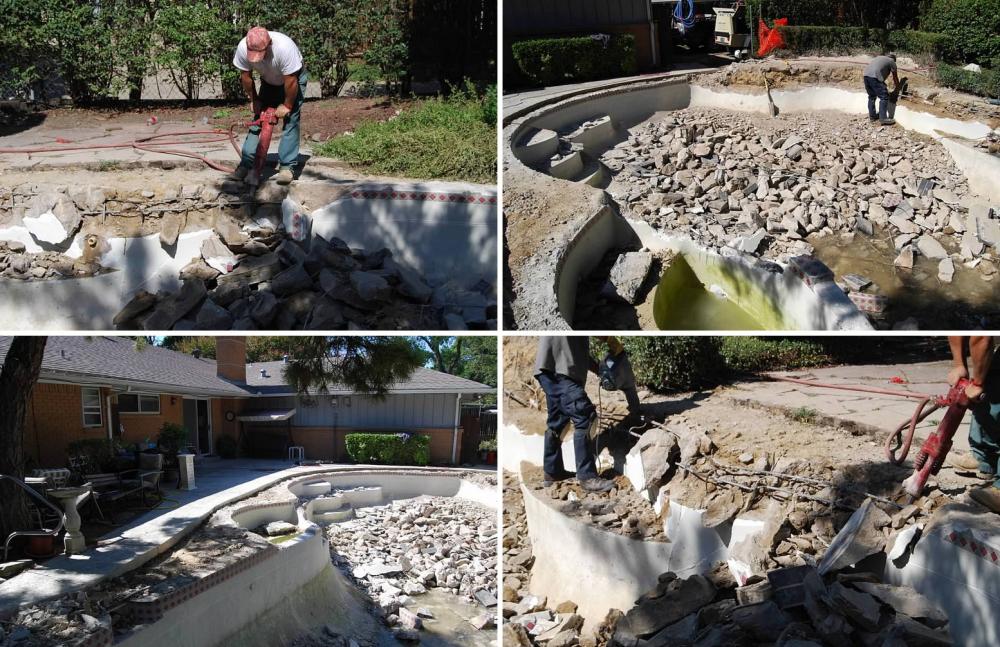
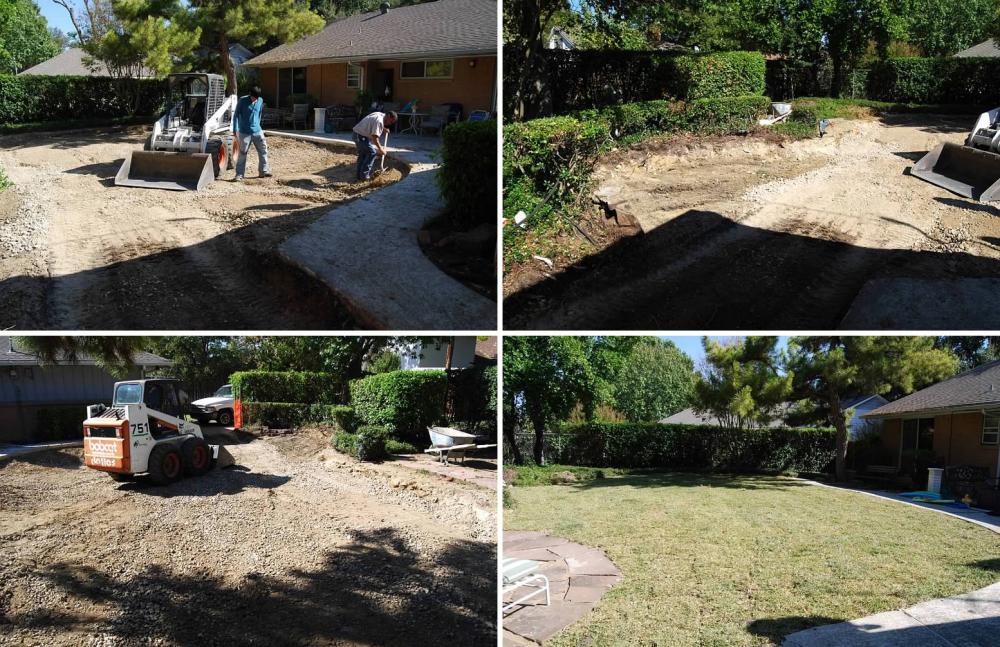
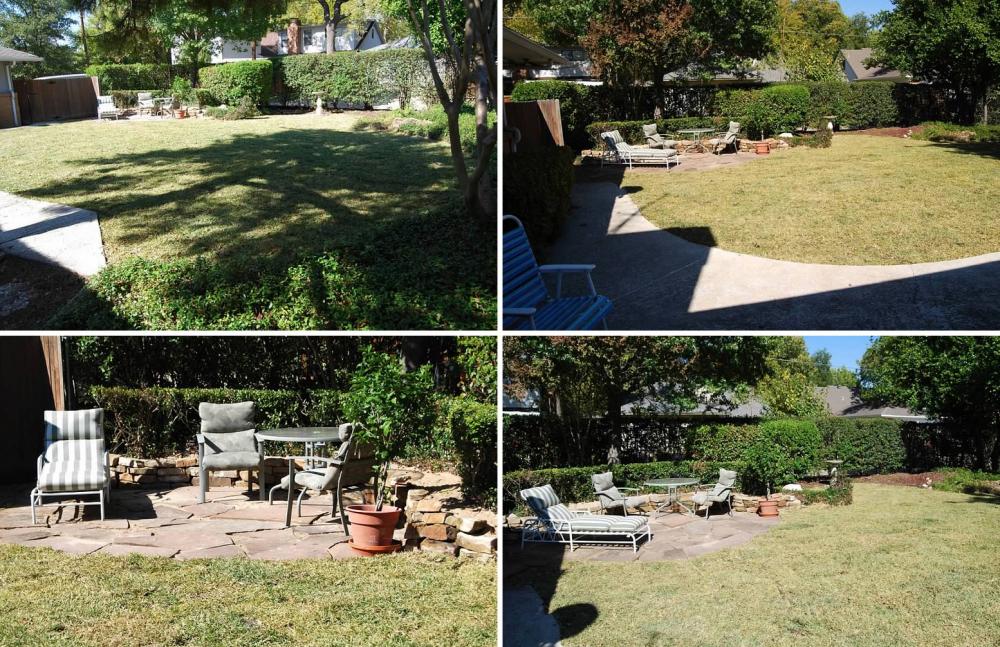
Complete pool demolition
Complete pool demolition involves fully breaking up the entire pool structure using the appropriate equipment. The broken down concrete, shotcrete, tiles, and other pool parts will be hauled off to be disposed of elsewhere instead of being buried as a backfill.
Which demolition process should you choose?
Your decision on whether to get your pool partially or completely demolished depends on several things.
- Cost – The cost of pool demolition itself depends on things like the size of your pool and the equipment needed. However, the demolition process also has bearing on the costs. Complete pool demolitions usually cost significantly more than partial pool removal because there are more materials to break up and dispose of.
- Impact on land stability – Partial pool demolition is not recommended if you plan on building a new structure on the backfilled area in the future. There is a likelihood that this area will experience shifting or sinkage if it is improperly filled and compacted.
- Effect on land desirability – If you have your pool filled in and you sell your property in the future, you will be required to disclose the procedure done to potential homebuyers. The kind of demolition done can have an effect on the desirability of your property. Typically, if you had complete pool demolition done, there will be less limitations on future land use, so it will be easier for you to find a buyer.
Remember that pool demolitions might require permits or need to be done under the guidance of engineers. If you are unsure about how to proceed, you may contact your local government in Texas. You can also get in touch with pool experts from Sterling Pool Service by calling 888-973-0274 or sending a message through our contact page. We provide advice and services to customers in the following areas: Sachse, Wylie, Murphy, Allen, Plano, Richardson, Garland and Dallas.
 A Native Pool Service Company
A Native Pool Service Company


